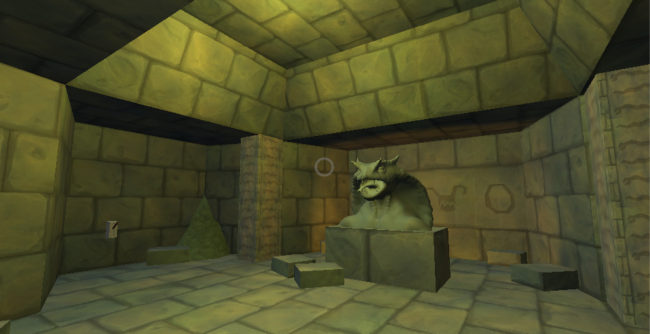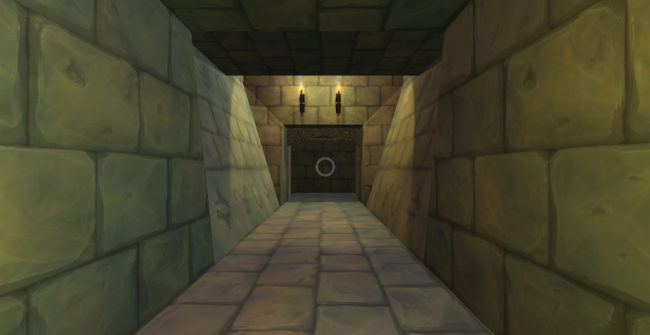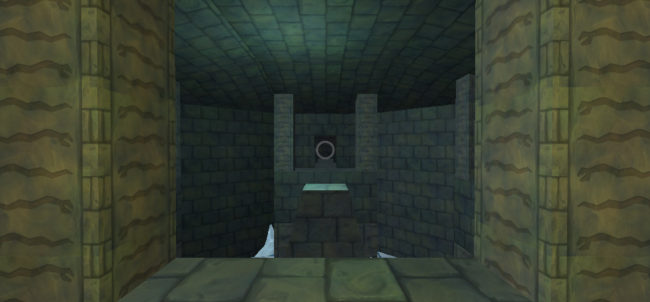The Art of the Juggle
Posted by Rampant Coyote on July 7, 2016
I work 11.25 hours, writing code. I come home (late), have dinner (saved in the fridge), spend time with the family, and watch a show with the wife. And then I spend another 4 hours… working, writing code.
I like my day job. It’s not usually this bad, and I’m doing some exciting and fun things to make a living. I love my “night job” writing stories and making games. That’s very fulfilling. I love spending time with my family. They are what makes life worthwhile.
I just prefer it when it’s not so difficult to juggle these things.
I don’t really have a point here. Maybe I’m just trying to justify why today’s blog post is so short.
Have an awesome day. As crazy as it might get, I plan to have one today as well.
Filed Under: Geek Life - Comments: 4 Comments to Read
Learning to Program: How Hard Is It?
Posted by Rampant Coyote on July 6, 2016
When people ask me about learning computer programming, I truthfully answer that I don’t feel it’s hard to learn. It’s not. It’s about one semester’s worth of a high school algebra class and a high school language class. There’s a “coding bootcamp” in nearby Provo that trains students how to do web development in JavaScript in 12 weeks. It’s limited, but it’s a marketable skill, and their selling point is job placement on graduation. You can start programming “Hello World” tonight, and within a couple of weeks of practice and learning, know enough to do casual programming.
Now, whether or not you’ll have the aptitude for it or enjoy it (I feel those two are tightly related, possibly synonymous) is another question. For me… I was one of those guys who never understood it when people told me they HATED the “word problems” in math class. You know, the ones where it describes a situation in life, like trains leaving stations at different times heading towards each other at different speeds, and what time will it be when they pass each other? For me, I’ve loved them for as long as I remember. But I don’t remember if that predated my learning to program. Did learning program make them easy and enjoyable for me, or did my natural predisposition towards them make me gravitate towards computer programming? I think it was the latter, but I am not certain.
For me, programming is all about those word problems.
I was never super-hot at math. I did well, but I struggled a bit with Calculus, and never went beyond that. Programming has a lot to do with math, but in my mind it’s also a bit like “math for people who want to cheat.” Those word problems I mentioned? Programming is like developing software to solve those problems for you, so you never need to do them again.
So instead of solving one train problem, we actually automate the process that we’d go through to solve all similar classes of train problems. Two trains depart along the same line at different times, going different speeds in different directions. Create a process to calculate when or if they’ll ever converge.
That’s software development. That’s programming.
There’s more to it than that. But at it’s heart, programming is about problem-solving through an automated processes, and converting that into a form that can be executed by a machine. Well, that’s half of it. The other half is trouble-shooting when something goes wrong. Because something inevitably goes wrong, and the processes in any non-trivial software can get extremely complex and interconnected with a staggering number of ways things COULD go wrong.
And that’s the flip side of learning to program. Programming is easy, but in the same way that learning to play a musical instrument is easy if you think of it as learning how to plunk out an identifiable rendition of “Mary Had a Little Lamb” on the piano. Mastery takes a lot of practice.
The difference between beginners and veterans is pretty profound, but not in an obvious way to the outsider. Both spend a lot of time staring at the screen, stepping through the debugger, looking stuff up, and cursing whoever wrote the code they are looking at (even if it was themselves, two months earlier). The difference is that the veterans have a much deeper toolbox, and a far better intuitive understanding of what’s going on under the hood… even with unfamiliar code. The good ones also generally have a better understanding of what makes good, maintainable code over the long term for a particular environment, and tend to code in a way that fosters ease-of-understanding (by humans) and easy change. At least insofar as possible given the fact that they are probably constantly under the gun with deadlines.
I could probably write a whole blog post on veterans vs. beginners. Suffice to say, everyone programming today had to be a beginner at some point. I remember spending hours trying to wrap my head around the concept of arrays, or how to write and read files to disk. Stuff that seems trivial to me today. I got there. And I am not really all that smart.
The important thing… in the context of making games as a casual pursuit at first… is that it can be fun while you are learning. I like programming. Solving problems is fun. I like making games. Even simple, stupid games that look like crap that I wouldn’t want to show to anyone. Now, if it doesn’t seem the least bit fun to you, then maybe that’s not really your thing, and that’s okay. But if you are so inclined, there’s no reason not to start. You’ll wake up tomorrow knowing a little bit about programming and a bit more about how computers work than you did yesterday.
Filed Under: Programming - Comments: 2 Comments to Read
Quick Take: Batman v. Superman
Posted by Rampant Coyote on July 5, 2016
 I finally saw Batman v. Superman: Dawn of Justice. The version I saw was the extended edition, which apparently resolves a lot of questions about character motivations, at the cost of a more plodding and confusing pace. So I won’t complain about the pacing here, because… well, I’m sure the theatrical release was better edited.
I finally saw Batman v. Superman: Dawn of Justice. The version I saw was the extended edition, which apparently resolves a lot of questions about character motivations, at the cost of a more plodding and confusing pace. So I won’t complain about the pacing here, because… well, I’m sure the theatrical release was better edited.
The movie follows two superheroes on a collision course with each other… well, more than that. One is trying to kill the other, and the other is suspicious of the first. And there’s a third superhero – a woman – who is peripherally involved until its time to fight a boss monster. These characters are named Superman, Batman, and Wonder Woman. They are loosely based on comic book characters by the same name, but… I dunno. I can’t say I’ve ever been a major DC Comics aficionado, but I spent a summer reading a bunch of Superman comics from the 70s and early 80s, and I kept up on a couple of Batman titles for a couple of years. So, at least from the time period that I followed, these characters… didn’t feel right. Batman in particular, but he’s as much based on the cinematic character as the comics character.
After some scathing reviews, I was a bit worried, but there were enough good review outliers to give me hope. In the end, I liked it more than I’d feared, but nowhere close to what I’d hoped. It was significantly better than “Man of Steel,” at least, but that’s not saying much. I could say the same of all of Zack Snyder’s films (that I’ve seen): It had some truly outstanding, cool-looking scenes, but the movie itself was disjointed and confusing.
Some Good Things: It didn’t shy away from the mess from Man of Steel. To the contrary, that was a focal point of the movie: Superman’s battle against General Zod killed a lot of people, wrecked a lot of lives, and caused untold destruction. Naturally, that has left the entire world freaking out about finding themselves powerless against a race (albeit almost entirely dead) of gods.
The relationship with Superman and Lois Lane was nicely done. Superman calling his mother just to talk to help deal with things was really nice. It was believable… human. Wonder Woman was also fun… the way she just relished the battle, even as she took her hits, was cool. Perry White, played by Laurence Fishburne, was excellent and pretty well dominated any scene that he was in.
I also liked that Superman had to slow someone’s descent to catch them when falling – not just grabbing them while they are approaching terminal velocity. Because landing in Arms of Steel at high speed really isn’t gonna be any better than landing on asphalt. Just ask Gwen Stacy.
The other thing which I think was a proper approach was the emphasis on the character’s secret identities. Even as a kid, the stories that resonated with me were the ones that focused primarily on the people behind the mask. Whether they were in costume or not, it had to be about characters first. A good Superman story has to be about Clark Kent. And to its credit, the heroes in this movie spend most of their time out of costume. But then, so did Man of Steel, and … well, necessary isn’t the same as sufficient.
So… there were a lot of very likable moments and scenes. But it jumbled together into something that was a bit of a mess (but again… this was the Extended Edition, so that may not have been a problem originally). The real problem here felt like the creators had a bullet-point list of “things that make Comic Book stories and movies really cool” and thought that was it. They confused a list of ingredients for a recipe. They poured ’em in and stirred, and then expected a a Lemon Meringue Pie didn’t drop out of the mixing bowl.
And maybe that’s the thing that bugged me the most about the film. There were some themes and ideas that were GREAT and could have been used and built on throughout the film to give it some great consistency. But… no. They were forgotten by the next scene. I think nowhere was this more apparent than the end, when they basically announce the sequel movies. Bruce Wayne is explaining about how these superheroes need to team up and fight together. Why? “I dunno, it’s just a feeling I have.”
What. The. Hell.? Okay, let’s try this on for size: You were just pwned by being manipulated and turned against each other by a nasty little sociopath. Your main problem with Superman – and his main problem with Batman – was fundamentally the same: Power unchecked, unilateral choices by someone answerable to nobody. Maybe getting together and at least talking to each other and helping right each other’s moral compass once in a while might be a frickin’ Good Idea in retrospect? If you don’t want to do the Captain America: Civil War thing and turn yourselves over to government supervision, that is. Forget this nebulous “I smell more movies in the air” thing… you’ve got your cause right there.
Tonally, I really don’t get this whole need to portray Superman in a gritty, nasty world with a whole theme of “No matter what he does, it hurts as many people as it helps.” Sure, it’s kinda fun to have some scenes where the newspapers and talking heads can’t help but chatter and argue over every single move the guy makes… but after a point, it’s not a Superman story. And Pa Kent? Seriously, after the two movies, I can’t imagine how Clark would have ever tried to be a hero at all. His entire life he must have been told, “Don’t do nuthin’, son, you are just gonna screw things up worse no matter what you do.” Kevin Costner, I know it’s not your fault, you did the best you could with the scripts you were given, but you are officially the Worst Jonathan Kent Ever.
I didn’t mind Ben Affleck as Batman. I mean, the character called Batman. But Jeremy Irons’ Alfred? HATE.
Then so much didn’t make logical sense. The boss battle… the REASON for the boss battle? Why the U.S. didn’t immediately go after an obvious suspect after a particular bombing? The villain’s motivations? The sudden change of heart about the whole central conflict of the movie? The characters all marched in lockstep with the dictates of the plot, occasionally providing retroactive motivations, but really just doing things because The Script Told Me To.
Anyway — bottom line: It felt like they had bits and pieces of a pretty decent movie. Probably nothing to compete with the best movies from Marvel right now (or even the Chris Nolan Batman movies), but definitely something that could have at least been a decent launch point for the DC cinematic universe. Instead, it’s kind of a mess with some moments of cool. Which might also adequately describe the Star Wars prequels. So… not so great.
Filed Under: Impressions, Movies - Comments: Read the First Comment
Happy Independence Day
Posted by Rampant Coyote on July 4, 2016
Happy Independence Day, for those readers from or living in the U.S.A.
Everyone else… have a great day wherever you are.
It’s a day off work for me, which means… I’m doing what I’m usually doing. Hanging out inside virtual dungeons. I’m weird that way.
Be safe and have fun!
Filed Under: General - Comments: Comments are off for this article
The Pulp Legacy: Modern Pulp Fiction
Posted by Rampant Coyote on July 1, 2016
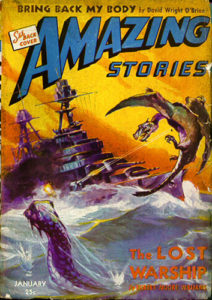 My previous post was all about classic “pulp” fiction from the late 19th century up through the middle of the 20th century. But then… it died out. Maybe not as dead as disco, but that particular form faded into the background. The rise of easier, more accessible entertainment probably accounted for much of it.
My previous post was all about classic “pulp” fiction from the late 19th century up through the middle of the 20th century. But then… it died out. Maybe not as dead as disco, but that particular form faded into the background. The rise of easier, more accessible entertainment probably accounted for much of it.
However, in spite of the decline, there are still a lot of folks out there who prefer reading as a primary or a secondary source of entertainment.
Even as the market for genre short fiction contracted, novels grew in popularity (and in the 1980s, seemed to grow significantly in page count and word count as well, compared to the slender pulpy novels that were popular up through the 1970s). The more constricted market made it more difficult for new writers, but the old pulp pros kept writing their stories and doing their thing. The distribution and preferences may have shifted, but the pulp story never really went away.
Stories Galore and on the Cheap
While Analog Magazine (AKA “Analog Science Fiction and Fact”) is now a “pro” magazine (paying higher-tier rates for genre fiction), it had its origins as a pulp magazine, going under the title “Astounding Stories,” and has been going on since 1930. That makes it pretty solidly the longest continuously-published science fiction magazine. Sadly, when adjusted for inflation, those “pro rates” seem to be about what the pulps paid back in the day. Or less. But that’s the short story market today.
 It’s not alone. In the “pro market” for science fiction and fantasy – some of the top shorter-form fiction published today on a regular basis, you’ve got Asimov’s, Intergalactic Medicine Show, Clarkesworld, Galaxy’s Edge, Apex, Daily Science Fiction, Fantastic Stories of the Imagination, and many others. These have some of the best genre stories out today (at least according to the tastes of the editors and the style preferences of the magazine), but even that represents a small fraction of the short form speculative fiction stories coming out today. At the “semi-pro” level, the list gets even bigger and more interesting (and specialized), with more genres represented. And there are entire sites (like Daily Science Fiction) that really specialize in flash or very-short stories. Moving out to anthologies of new fiction (which may be one-off, irregularly published, or only published annually or whatever), things get even more exciting. (I recommend Writers of the Future, an annual anthology of some of the best up-and-coming new authors and artists).
It’s not alone. In the “pro market” for science fiction and fantasy – some of the top shorter-form fiction published today on a regular basis, you’ve got Asimov’s, Intergalactic Medicine Show, Clarkesworld, Galaxy’s Edge, Apex, Daily Science Fiction, Fantastic Stories of the Imagination, and many others. These have some of the best genre stories out today (at least according to the tastes of the editors and the style preferences of the magazine), but even that represents a small fraction of the short form speculative fiction stories coming out today. At the “semi-pro” level, the list gets even bigger and more interesting (and specialized), with more genres represented. And there are entire sites (like Daily Science Fiction) that really specialize in flash or very-short stories. Moving out to anthologies of new fiction (which may be one-off, irregularly published, or only published annually or whatever), things get even more exciting. (I recommend Writers of the Future, an annual anthology of some of the best up-and-coming new authors and artists).
And that’s just short-form fiction. I’m not even going to go into novels, or the explosion of small and indie press publishers. Clearly, there’s plenty for a reader to choose from. Too much, probably. The biggest challenge is for readers to find ones that cater to their interests.
With the advent of digital publishing, print-on-demand, and similar technologies, the cost of distribution is cheaper than the pulp publishers could have dreamed. Because of the ease of self-publishing, this has sadly lowered the bar a bit in terms of overall quality. No gatekeepers means there are no filters. Just like the indie video game industry, I prefer a world with no gatekeepers than one where said gatekeepers have great control over what trickles out to the marketplace. Fortunately, just like they heyday of the pulps, there may be a lot of crap out there, but there are lots of good and great stories as well, of all sizes: From tome-sized novels down to “flash fiction” of less than 1,000 words (often 500 or less).
Really, the digital revolution makes the pulp era kinda pale by comparison.
“New Pulp” – Same Great Taste, Fewer Calories.
There are lots of anthologies that have sought to emulate the pulp style and flavor – even to the point of setting the stories in the era of pulp’s dominance. Hard-boiled detective novels set in the 1930s. Or – one of my favorite ideas – “Dieselpunk” stories set in an alternate history version of the early-to-mid 20th century. In some cases, its simply to revive a subgenre that has been left somewhat fallow over the decades.
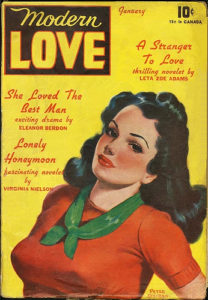 Ultimately, I don’t see a need for any kind of pulp “revival” because I don’t believe it never went away. It evolved and changed a bit with the times and technology, but not as much as some folks might imagine. It learned how to better meet the tastes of its audience. It learned the tricks and tips to tell a better story. The pulp era was a survival-of-the-fittest test of stories and storytellers, but the lessons they learned were shared and spread.
Ultimately, I don’t see a need for any kind of pulp “revival” because I don’t believe it never went away. It evolved and changed a bit with the times and technology, but not as much as some folks might imagine. It learned how to better meet the tastes of its audience. It learned the tricks and tips to tell a better story. The pulp era was a survival-of-the-fittest test of stories and storytellers, but the lessons they learned were shared and spread.
Because pulp covered such a wide range of styles and genres, it’s pretty difficult to nail down exactly what made a “pulp” story then, or its successors today. It was more of an approach and an intended audience. These were the stories for the common man (and woman). While they might have had big ideas, thought-provoking situations, deeper meanings, themes, and messages, their primary focus was to entertain. These weren’t stories to win awards, these were stories to be worth a working person’s hard-earned change for several hours of escape. Considering pulp’s peak included wartime and the Great Depression, escape was often desperately needed.
Today isn’t that different. The reading audience of today may be more discerning, demands higher quality writing (modern tools make this easier), and demands more detailed characters. But those of us who read for entertainment still like the same things. Lester Dent’s “Master Plot Formula” and a dozen variants for different genres and types of stories that were learned the hard way during the golden age of pulp don’t need many changes to be perfectly valid today. A lot of the best-selling authors today go straight from the pulp playbook. Some even admit it.
While authors might not be able to make a living cranking out short fiction anymore, and the newsstands don’t blossom with dozens of lurid covers of cheap fiction magazines these days, pulp fiction is still with us. It’s fast-moving, fun, simple, layered, and punches its way through the story with visceral details. It entertains, first and foremost. It may also creep out, titillate, inspire, explain, conjecture, evangelize, provoke, or encourage. But it’s not really out to show off… it’s there to give the reader a good time.
Pulp didn’t pay much, but it did pay, and the market was large enough to support a prolific writer of reasonable skill. The point for pro writers in the pulp era was to write fast with as few revisions as possible. Make it good, make it fast, make it stand out. Sell lots. That’s still great advice.
I’ve heard arguments against this, that a good writer should agonize and labor over every word. While I’m definitely no expert, I personally don’t see how writing should be different from every other skill in the world, where lots of practice yields improved results. Lacking a depth of personal expertise, I’ll just quote the godfather of hard-boiled detective genre, Raymond Chandler: “The faster I write, the better my output. If I’m going slow, I’m in trouble. It means I’m pushing the words instead of being pulled by them.”
James Patterson and Nora Roberts have story structures that fit very easily into Lester Dent’s formula. Michael Crichton may not have been the greatest wordsmith in the world, but his novels were full-on pulp adventures and frequently turned into movies, including a blockbuster franchise.
 At one conference, the romance novelist L. L. Muir (her pen name) pulled out Michael Moorcock’s pulp novel writing formula and showed us how she adopted it to cranking out the first draft of a romance novel in three days. At another conference, J. Scott Savage (author of a number of middle-grade fantasies) shared a not-so-secret formula for successful pacing, using several popular movies and books to show how they fit perfectly within this structure. And … color me not surprised… it was key parts of the Lester Dent formula. Since I’ve learned more of how successful pulp stories were structured and the techniques they evolved to crank out popular fiction, I’ve seen it over and over again in novels by my favorite authors. While it makes them a little more predictable, I can’t say that knowing how the sausage is made has really detracted from the experience.
At one conference, the romance novelist L. L. Muir (her pen name) pulled out Michael Moorcock’s pulp novel writing formula and showed us how she adopted it to cranking out the first draft of a romance novel in three days. At another conference, J. Scott Savage (author of a number of middle-grade fantasies) shared a not-so-secret formula for successful pacing, using several popular movies and books to show how they fit perfectly within this structure. And … color me not surprised… it was key parts of the Lester Dent formula. Since I’ve learned more of how successful pulp stories were structured and the techniques they evolved to crank out popular fiction, I’ve seen it over and over again in novels by my favorite authors. While it makes them a little more predictable, I can’t say that knowing how the sausage is made has really detracted from the experience.
Dean Wesley Smith is unapologetic about his use of the Lester Dent pulp “formula.” He states, “All bestsellers in modern times follow this structure as well, which is why they sell so many copies.”
The cheap pulp paper has given way to eBooks and print-on-demand. Reading for entertainment is more of a preference now among many cheap, easy alternatives than existed nearly a century ago. The market has changed. Styles and genres have shifted around. But the fundamentals are the same. What makes a good story now hasn’t changed much, although we probably understand it better now than in 1930. And the need for great, entertaining fiction is as strong today as ever.
Filed Under: Books, Writing - Comments: Comments are off for this article
What Is Pulp Fiction, and Who Cares?
Posted by Rampant Coyote on June 30, 2016
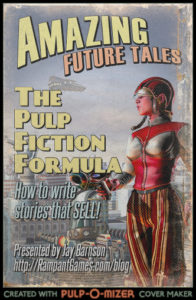 A few weeks ago at local convention, I gave a short presentation on the “pulp fiction formula,” referencing the Lester Dent “Pulp Fiction Master Plot Formula.” When I talk about this, one of the first questions I receive is “What is pulp fiction?” Which comes with the implied question, “Why should I care?”
A few weeks ago at local convention, I gave a short presentation on the “pulp fiction formula,” referencing the Lester Dent “Pulp Fiction Master Plot Formula.” When I talk about this, one of the first questions I receive is “What is pulp fiction?” Which comes with the implied question, “Why should I care?”
Now, I don’t consider myself an expert, just someone who might have done more research and read a bit more than average. But it’s enough that I get a little annoyed at some of the references to pulp fiction today, usually referring to it as a title of derision. A story is “just” pulp fiction, or something. I suspect that most of the time the person making the reference really isn’t familiar with it, and have only heard that the pulps were simply cheap, low-quality sources of lurid, hastily-crafted tales. And — okay, this far, they would probably correct. But there are implications there that, at least in my mind, are false. Well, partly false.
Sure, the pulps had a lot of crappy stories. So do libraries. They were also the source of a ton of classics and some of the most respected writers of their era. So… I guess we need to go back to the question, “What is pulp fiction?” I apologize if I get details wrong or oversimplify things, but hopefully it’ll be at least somewhat educational.
The Pulp Era
The simple, historical answer is that pulp fiction consists of stories that were published in pulp magazines, which were popular from the late 1800s until around the 1950s. They lost popularity at pretty much at the same time as other forms of entertainment gained dominance, like television. The pulp magazines were printed on cheap, low-quality paper made from wood pulp. Think comic-book paper, or maybe even newsprint. Before the digital era, that was about as cheap as you got.
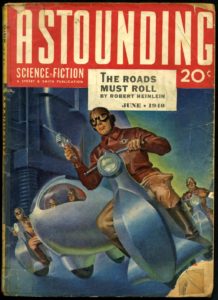 Unlike the more expensive “slicks” and other sources of entertainment, the pulps catered to the common man. They were cheap and exciting, full of stories for folks who just wanted to be entertained. The pulps were the home of “genre fiction” – pop fiction, with an emphasis on plot-driven stories. They were where most stories in certain “genres” were published… science fiction war stories, mysteries, romance, etc. With them, the market for stories expanded. And for the average working-class author, the pulps were where you made your rent. They WERE the market. They weren’t high-paying, but they’d pay. There were a lot of them… with new ones appearing all the time as the old ones ceased publication. And they’d print everything from short stories to full-length novels (which averaged a bit shorter then than they do now).
Unlike the more expensive “slicks” and other sources of entertainment, the pulps catered to the common man. They were cheap and exciting, full of stories for folks who just wanted to be entertained. The pulps were the home of “genre fiction” – pop fiction, with an emphasis on plot-driven stories. They were where most stories in certain “genres” were published… science fiction war stories, mysteries, romance, etc. With them, the market for stories expanded. And for the average working-class author, the pulps were where you made your rent. They WERE the market. They weren’t high-paying, but they’d pay. There were a lot of them… with new ones appearing all the time as the old ones ceased publication. And they’d print everything from short stories to full-length novels (which averaged a bit shorter then than they do now).
Genre fiction in mass-market paperbacks (the successors to “dime novels”) were often reprints from magazines, printed on the same low-quality pulp paper. So referencing the “pulps” applies equally well to genre fiction novels of the era.
The Pulp Authors and Market
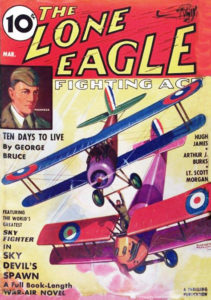 The editors of these magazines had to build a consistent audience based on the overall quality and the genre of their stories. Their audience would buy a particular magazine because it had stories like ones they’d previously enjoyed, or authors they’d previously enjoyed. Gee, sounds like some universal realities here, right? “Air Wonder Stories” differentiated itself from “Air Adventures” by printing stories with more of a science fiction and futuristic twist to the aviation adventures. But the bottom line was that they had to print something like 135,000 words every month, every other month, or every quarter. They needed stories that would appeal to the mass market (insofar as their genre specialization would allow), they needed a lot of them, and they needed them cheap.
The editors of these magazines had to build a consistent audience based on the overall quality and the genre of their stories. Their audience would buy a particular magazine because it had stories like ones they’d previously enjoyed, or authors they’d previously enjoyed. Gee, sounds like some universal realities here, right? “Air Wonder Stories” differentiated itself from “Air Adventures” by printing stories with more of a science fiction and futuristic twist to the aviation adventures. But the bottom line was that they had to print something like 135,000 words every month, every other month, or every quarter. They needed stories that would appeal to the mass market (insofar as their genre specialization would allow), they needed a lot of them, and they needed them cheap.
So… you end up with the sort of situation we have today with “indie” digital publishing, only not quite as saturated.
The market reality rewarded the authors who could write fast, who could write sufficiently well, and could tell an entertaining yarn of an arbitrary size. A reputation for all of the above (plus some level of professionalism) would put the author in good standing with editors, which made everybody’s job easier. Several famous / influential / popular pulp fiction authors include Raymond Chandler, H. G. Wells, Edgar Rice Burroughs, Max Brand, H.P. Lovecraft, Dashiell Hammett, Ray Bradbury, Leigh Brackett, Robert E. Howard, Lester Dent (known more frequently by his pen name Kenneth Robeson), Michael Moorcock, James M. Cain, Richard Matheson, Jim Thompson, Fritz Lieber, Robert A. Heinlein, L. Ron Hubbard (yeah, the Scientology guy), Phillip K. Dick, L. Sprague de Camp, Isaac Asimov, Poul Anderson, and James Blish. Many of these folks went on to become influential in the “literary fiction” arena as well. And while their careers may have evolved past the pulps (especially once the pulp era came to an end), many of their best-known works were first printed in pulp magazines or in pulp paperbacks.
The Pulp Style, Quality, and Influence
 There’s a style associated with the pulps these days that might be more appropriately associated with fiction of the time period rather than where they appeared. The characters use the slang of the day. Writing styles have evolved a lot too. Things that are strongly discouraged in modern fiction (like excessive adverbs, dialog tags, and passive voice) are on full display.
There’s a style associated with the pulps these days that might be more appropriately associated with fiction of the time period rather than where they appeared. The characters use the slang of the day. Writing styles have evolved a lot too. Things that are strongly discouraged in modern fiction (like excessive adverbs, dialog tags, and passive voice) are on full display.
Some of the genres – like aviation stories – derived from the public fascination in the exciting new technology and its impact on modern (for the time) life. Westerns were popular because they spoke to an idealized view of the American frontier in a time that wasn’t that far distant… sort of like us in the modern era talking about the 1950s or even the 1980s. The stories and characters represented the culture of their era, even when projected into the distant past or future. Modern stories do the same.
This also means they reflect the mores and social traditions of the author’s culture, which some modern readers might find impedes their enjoyment. While readers expecting rampant racism and sexism will certainly find it, readers might be equally surprised by how downright and sometimes subversively… well, progressive… many stories are. Especially when one considers they were printed in an era of civil rights strife and when the government encouraged women to return to their “place” in the home, so that returning soldiers could get back to their relatively high-paying jobs that the women had performed during the war.
Every genre has its own quirks, but in general, pulp stories were lurid, action-oriented, and imaginative. After all, they had to provide novelty to readers in every issue! Characters were simple but interesting. They didn’t stand out with too many weird quirks most of the time. Instead, they tended to be more of a reader surrogate, so that any reader could identify with them and easily project themselves into the character. Ultimately, the stories were written to be “crowd-pleasers.” They make up for their lack of subtlety with imagination… even in the somewhat more down-to-earth genres.
Another interesting feature is the number of short stories featuring the same characters. Doc Savage and his crime-fighting team, Conan, Mike Hammer, Tarzan, Eric John Stark, Perry Mason, The Shadow, Sherlock Holmes, John Carter, Elric of Melnibone, Solomon Kane, Philip Marlowe… The list goes on. This isn’t very different from how book series are handled today, except where these characters made repeat appearances in short stories rather than novels.
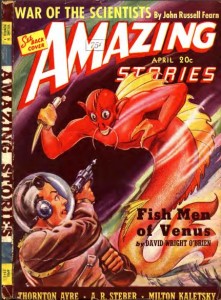 As to quality… it runs the gamut. Seriously. Even within the same issue. Things are a little easier if you read an anthology that may be more of a “best of” from a particular magazine or author. But going on the basis of an average issue… saying that “not every story is a gem” would be an understatement. But that’s not saying that the stories are terrible, either. Yeah, I made fun of Fish Men of Venus, and I wish I could say it is unusually bad. It’s not. There are worse. But there are also much better.
As to quality… it runs the gamut. Seriously. Even within the same issue. Things are a little easier if you read an anthology that may be more of a “best of” from a particular magazine or author. But going on the basis of an average issue… saying that “not every story is a gem” would be an understatement. But that’s not saying that the stories are terrible, either. Yeah, I made fun of Fish Men of Venus, and I wish I could say it is unusually bad. It’s not. There are worse. But there are also much better.
Some of what might seem quality issues would be what seems tired or obvious plot devices or twists, but that’s also a factor of the stories having inspired generations of imitators, in literature, cinema, video games, you name it. Some of this was also dictated by story size. If you have a detective story with only three main characters – the protagonist, the protagonist’s partner, and the obvious guilty party – it’s pretty obvious what the “surprise twist” at the end will be.
Almost by definition, these stories are, collectively, “Average” for the period in quality… simply because the sheer quantity of pulp fiction skews the curve. The pulp masters deduced a lot about how to tell a good, entertaining story over time, and developed successful patterns (Dent called it a “formula,” but I don’t think it’s quite that well-defined) that met the audience need. Much of what we now know about writing came from trial-and-error in these kinds of stories. Even if many of these stories wouldn’t pass editorial muster today, it’s because we’ve got easy-to-read signposts along the trail that they blazed.
Old Pulp, New Pulp, and Reading Pulp Today
Are these old stories worth reading today? In some cases, yes, absolutely. Many pulp-era stories have deservedly become classics. There are many more lesser-known gems to be found in the pages of these old magazines. Some of the authors were extremely skillful wordsmiths and are a delight to read. Some are simply imaginative and have incredibly fascinating worlds to explore. Some are both. Unfortunately, due to the age of the magazines, they can be hard to find, and finding any kind of reviews or filters can be harder that finding the stories themselves.
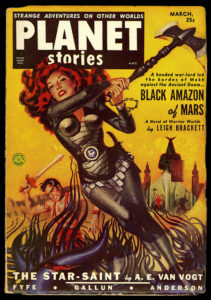 Your best bet is to find anthologies by some of the pulp masters mentioned above. These tend to be more of a “best of” collection in the first place, which is nice. Even the best authors don’t hit home runs every time. If your local library doesn’t have them, Amazon frequently does, especially in ebook format.
Your best bet is to find anthologies by some of the pulp masters mentioned above. These tend to be more of a “best of” collection in the first place, which is nice. Even the best authors don’t hit home runs every time. If your local library doesn’t have them, Amazon frequently does, especially in ebook format.
Because of the cheap paper used, pulp books don’t age well. It’s hard to find the originals, and the publishers aren’t around to issue reprints. You can find some on EBay and Amazon, but expect to fork over some cash for something that’s probably not in great condition.
Digital archives exist for some issues, but many may be lost to antiquity. Because of reprints and copyrights, some of the stories may not be legally reproduced yet, but the low-quality media means there may be no surviving copies to digitize before it’s legally free-and-clear to do so. That’s the bad news. The good news is… there’s a lot out there.
The most legally scrupulous source I know of is the Pulp Magazine Project, which not only has issues (or partial issues, where parts are not in the public domain) for download, but tons of articles, history, lists, photographs, and so forth. It has far more information than I have here, and they know their fiction magazine history *WAY* than I do. It’s great stuff, but I’m not sure how actively it’s being updated. They do post fairly regularly (if not super-frequently) on their facebook page.
Pulp Covers is exactly what it says on the tin. They are regularly adding new covers, which are just fun to look at. They also have links back to where that particular issue may be available… often EBay or Amazon for the physical copy, or a digital archive. As an author, just digging through some of that old cover art can be inspiring. But mostly, it’s fun. I take some small exception to their tagline, “The Best Of The Worst,” but… Okay. Let’s be honest. Before there were clickbait links, there were magazine covers…
A fantastic digital source if you don’t mind drinking from the fire hose is the Pulp Magazine Archive.
That’s the old, classic pulp.
But pulp ain’t dead.
The “pulp” legacy is very much alive today. But since this article is about 3x longer than I intended it to be at this point, I’m going to talk about that topic later.
Filed Under: Retro, Short Fiction - Comments: Read the First Comment
Ghostbusters and billions in Venture Capital: Maybe VR is more than a fad.
Posted by Rampant Coyote on June 29, 2016
I wonder how many people will be a Ghostbuster in New York as their first Virtual Reality experience? It’s probably not a bad way to start. Rumor has it this little experience will continue for a while, both at Madame Tussaud’s and at other The Void entertainment sites (when they open). So… even if the new movie sucks, there will be some good that comes out of it.
Here’s a report of an early visit:
The Virge: We tried Ghostbusters: Dimension, the world’s most immersive VR experience
Indie game developers get an added bonus out of this teaser, as it makes a big deal of their technology of choice, a favorite of indies everywhere.
And… something even more exciting from a developer perspective… BILLIONS (with a B!) may be available to fund VR-related development. If you’ve got some new and innovative application for VR, this might make sense:
Virtual Reality Venture Capital Alliance
Bottom line: It could be wishful thinking on my part, but there’s evidence that this VR thing may be more than a fad. Maybe. 🙂 At least there’s some serious money betting on it now… from Hollywood to the Venture Capital community. And of course, hardware manufacturers and Facebook.
Filed Under: Virtual Reality - Comments: Comments are off for this article
Cirsova #2 Funds – Celebrates By Making Issue #1 Free This Week
Posted by Rampant Coyote on June 28, 2016
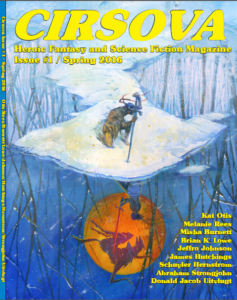 I’ve mentioned the Kickstarter campaign for Cirsova Magazine, issue #2. Well, they’ve cleared the funding minimum (with a week to spare!), and are celebrating by making the first issue free for the rest of the week!
I’ve mentioned the Kickstarter campaign for Cirsova Magazine, issue #2. Well, they’ve cleared the funding minimum (with a week to spare!), and are celebrating by making the first issue free for the rest of the week!
So grab the ebook off of Amazon if you want to check it out.
Pulpy goodness.
Except, you know, purely digital is cheaper than pulp.
(Reminder: I’ve got nothing to do with issues 1 or 2, but I do have a story scheduled for issue 4)
Filed Under: Books, Deals - Comments: 2 Comments to Read
Virtual Reality: The Giggle Chamber
Posted by Rampant Coyote on June 27, 2016
 Consumer-level Virtual Reality (VR) is brand new, and still pretty expensive, which means its still at the “early adopter” stage… bleeding edge, unpolished, and expensive. But it also means that most people haven’t tried it yet, and so said early-adopters get the pleasure of introducing people to it. And yeah, it’s a pleasure. The first minute or so is often accompanied by giggles. Or shrieks, depending on the experience. Maybe both. And lots of comments like, “Wow!” and “This is so cool!”
Consumer-level Virtual Reality (VR) is brand new, and still pretty expensive, which means its still at the “early adopter” stage… bleeding edge, unpolished, and expensive. But it also means that most people haven’t tried it yet, and so said early-adopters get the pleasure of introducing people to it. And yeah, it’s a pleasure. The first minute or so is often accompanied by giggles. Or shrieks, depending on the experience. Maybe both. And lots of comments like, “Wow!” and “This is so cool!”
Hopefully, it’s also accompanied by someone assisting the first-timer so it’s a relatively safe, guided experience. One of the problems with room-based VR is people might bump into walls or fall over. Or they might get feeling “uncomfortable,” to use the euphemism for VR sickness, especially if it’s lower-quality hardware or software. Assuming it’s handled with a modicum of responsibility, it’s great fun for both sides.
The expectation going in seems to be that it’s going to be a new, improved, bigger screen. Which sounds cool – 360 degree visuals! The reality (well, virtual reality) is that this stuff really plays with your brain and your perception of reality. With your audio and visual senses getting fooled, the Matrix pretty much has you. Throw in a bit more presence and haptic stimulation, and the gap closes a little bit more. While we’re still a ways off from the Star Trek holodeck, what we’ve got is still pretty remarkable, and it’s a (hopefully pleasant) shock to the system.
Others have noted that people often refer to VR games as being “in” a place, as opposed to “playing” something. That’s an interesting phenomenon. I don’t know if it will stick going into the future, but at first, it seems like that’s how our brains react to the experience. Is this “messing with our minds” a bad thing? I dunno, but humans are extremely adaptable. Within ten years, maybe this will be as natural and as common to us as watching television or riding in a car.
But for now, it’s fun to watch people experience it for the first time. Maybe not quite as much fun as experiencing it yourself, but close. The giggles are infectious.
Filed Under: Virtual Reality - Comments: Comments are off for this article
The Steam Summer Sale is Fully On! And Frayed Knights is Half Off!
Posted by Rampant Coyote on June 24, 2016
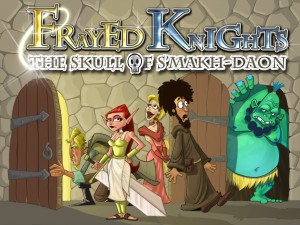 Okay, that’s my quota for clever headlines for the month.
Okay, that’s my quota for clever headlines for the month.
Frayed Knights: The Skull of S’makh-Daon is half-off at the Steam Summer Sale.
I heartily recommend it, even if the designer is a goober who takes too long getting the sequel out the door.
If you’ve already got it, well, there’s lots and lots of stuff to make your wallet cry out for mercy.
Filed Under: Deals - Comments: Comments are off for this article
Mythica and Cirsova – Successful Crowdfunding Campaigns Winding Down
Posted by Rampant Coyote on June 23, 2016
I’d posted when these launched, but I thought I’d post a reminder. These aren’t mine… I’m at best peripherally involved.
 Anyway – first up, the final (?) Mythica movie in the series … Mythica 5: The Godslayer. If you haven’t seen any of the films yet and are a fantasy buff… give the first one a watch. I can’t promise you’ll like it, but it has gained quite a fan following. The final movie has already cleared its original goal by a substantial margin going into its last 2 days, and have already unlocked a stretch goal of development on a board game.
Anyway – first up, the final (?) Mythica movie in the series … Mythica 5: The Godslayer. If you haven’t seen any of the films yet and are a fantasy buff… give the first one a watch. I can’t promise you’ll like it, but it has gained quite a fan following. The final movie has already cleared its original goal by a substantial margin going into its last 2 days, and have already unlocked a stretch goal of development on a board game.
My peripheral involvement is being friends with one of the producers, and previously worked with him on the “Massively Multiplayer RTS”, Saga. Which, BTW, is the same world as Mythica’s setting, I understand. So… there’s that.
Mythica 5: The Godslayer – Kickstarter Campaign
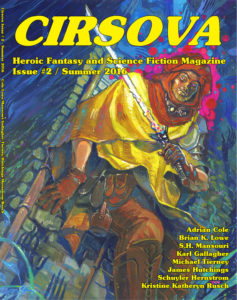 Next up: Cirsova Magazine, issue 2. It’s a magazine of heroic fantasy and science fiction, with an emphasis on pulp-era subgenres of Planetary Romance and Sword-and-Planet. Think classic works by Leigh Brackett, Jack Vance, Edgar Rice Burroughs, Fritz Leiber and Robert E. Howard.
Next up: Cirsova Magazine, issue 2. It’s a magazine of heroic fantasy and science fiction, with an emphasis on pulp-era subgenres of Planetary Romance and Sword-and-Planet. Think classic works by Leigh Brackett, Jack Vance, Edgar Rice Burroughs, Fritz Leiber and Robert E. Howard.
This is really more of a pre-order and a convenient(ish) way to sell advertising space. It’s quite likely that the only way to get a paper copy of the magazine is via this pre-order (unless it does very well and warrants reprints). I guess that’s how you keep costs down in an era print fiction magazines have become scarce. But there’s just over a week left in the campaign, if you are interested. They’ve already cleared their initial goal, so it’s a go regardless.
As far as peripheral involvement… I have a story in a later issue of Cirsova. It’s a done deal and has already been paid for it. I just like the magazine so far and want more modern-pulpy goodness in an otherwise scarce (in the modern era) couple of subgenres. I’ve like what I saw enough in the first issue to want to see it continue.
Filed Under: Crowdfunding - Comments: Comments are off for this article
Tags: Cirsova, Fantasy, Mythica, Pulp Fiction
Why I Am (Still) Excited for No Man’s Sky
Posted by Rampant Coyote on June 22, 2016
No Man’s Sky has been pushed back to an August release. This disappointed me, as I was looking forward to its original release date of this week. Like, by today. Reasons for the delay haven’t been announced, although apparently some legal trouble in the UK with the word “Sky” (because a company owns the trademark on software with that word in it, and therefore can, really, take the Sky from us) was a long-standing issue. But that was probably not the only issue. Hopefully they’ve made good use of the extra six weeks of cooking things.
At this point, the hype train for this game has set some kind of a land-speed record. There’s lots of excitement, and hardly anyone has played it, and not a lot of people outside the development team really know what to expect.
To some degree, I get annoyed at the hype. I’ve been playing procedurally-generated world games forever. One of the first RPGs I ever played (and I played it a ton) was Telengard, an early title for my then-new Commodore 64. I played Frontier (AKA Elite 2) in the early 1990s to excess. Same idea. And reminds me that I need to play more Elite: Dangerous.
The thing about these games (and Daggerfall, etc.) is that their procedural world / universe generation is fixed. While events may be dynamically generated, the map is going to be the same everywhere forever, unlike your usual roguelike. This is kinda cool because there’s a feeling of persistence there, and a shared-universe thing with other players, that makes it feel a bit more “real.”
Some of the frustrating hype about No Man’s Sky comes from people who don’t realize this kind of thing has been around forever. The whole “OMG It’s a Whole Universe!” is stupid. Any halfway decent game programmer can do that in a week. A day, if you don’t mind it being a text adventure. The trick is doing it well. And making the game built around it fun. (See all the complaints from some Elite: Dangerous players running out of interesting things to do).
 As far as the other aspects of the game… there’s not much I’m seeing that seems new here. I’ve played the X series, Elite: Dangerous, Evochron: Mercenary, Galaxy on Fire 2, and a host of other space games with lots of space exploration and trading and fighting going back to Elite. I’ve got a few in my GOG.COM and Steam accounts I haven’t even played yet. I’ve played Minecraft and Empyrion Galactic Survival and Starforge and some other sandbox survival games. Once again, there’s nothing new or totally groundbreaking going on here. The trick is, once again, to do it well.
As far as the other aspects of the game… there’s not much I’m seeing that seems new here. I’ve played the X series, Elite: Dangerous, Evochron: Mercenary, Galaxy on Fire 2, and a host of other space games with lots of space exploration and trading and fighting going back to Elite. I’ve got a few in my GOG.COM and Steam accounts I haven’t even played yet. I’ve played Minecraft and Empyrion Galactic Survival and Starforge and some other sandbox survival games. Once again, there’s nothing new or totally groundbreaking going on here. The trick is, once again, to do it well.
And that’s why I’m still excited about No Man’s Sky. While there’s nothing particularly groundbreaking about any one thing they seem to be doing, what we’ve seen so far looks like they are doing a good job of it all. Things so far have seemed to be of very high quality, and so there’s reason to hope the other elements are treated to the same level of quality. Here’s what I’m excited about:
Style and Appearance: Based on the screenshots, videos, and lectures… these guys really worked their butts off to make procedural generation work, and to give the game a consistent and beautiful style. And not just that, but a style that hearkens back to the pulp sci-fi covers I grew up with, by artists like Chris Foss and Stewart Cowley. They’ve clearly taken great pains to make the procedural content generation resemble hand-generated content of an unusual and beautiful style, and it makes me want to play just to take screenshots.
Lore: Besides just letting the software cobble together the universe, they’ve seeded it with some lore, specific alien races, languages, ancient artifacts, and so forth. I like that the universe looks “lived in,” even though you may play for days at a time without encountering anything seen or touched by another player. I hope that this helps the game spark the imagination.
Ease of Play: This is only an impression that I get from watching the videos, so it’s a hope. One of the issues with many space sims these days is that they are so delicious complex and details (good) that they are extremely complicated to get into and to learn how to play (not so good). No Man’s Sky looks like they are orienting more towards ease-of-play and a less hardcore experience. They aren’t going to be slowing you down forever for the sake of stretching out their content… ‘cuz really, content quantity isn’t going to be a problem here.
 Content Density: This is another big deal. Based on the videos, the worlds are pretty packed. And packed together, within a star system. Completely unrealistically, as if lots of habitable worlds was in any way expected to be realistic in the first place. But the videos and screenshots seem to have worlds teeming with life, cave systems, and items of interest, with space ships flying overhead regularly, stumbling into space battles and stations and so forth as soon as you pop out of the atmosphere, etc. In other words, not a lot of wandering around and waiting to get to something interesting. This is a big deal.
Content Density: This is another big deal. Based on the videos, the worlds are pretty packed. And packed together, within a star system. Completely unrealistically, as if lots of habitable worlds was in any way expected to be realistic in the first place. But the videos and screenshots seem to have worlds teeming with life, cave systems, and items of interest, with space ships flying overhead regularly, stumbling into space battles and stations and so forth as soon as you pop out of the atmosphere, etc. In other words, not a lot of wandering around and waiting to get to something interesting. This is a big deal.
Emphasis on Exploration: While it sounds like you are free to do things like any other space mercenary game (a good thing!), if the Hello Games folks are truly emphasizing exploration – and it seems they are – this hopefully means that they are taking pains to make it as interesting and exciting as possible. That’s a tall order, and I can only say that if they did as good a job on that as they did on the graphics, maybe it will be done right. Exploration in a procedurally generated world can get old fast, but doesn’t have to. And that’s some of my favorite kind of gameplay.
So… there’s a lot of “ifs” there. We won’t know until we play, but I’ve been impressed by what I’ve seen. I’ve seen a lot more procedural content generation done wrong than done right, but so far, it looks like Hello Games is working hard to meet or clear the high-water mark on getting it right. Which means I may find myself lost in this game for a while.
Filed Under: General - Comments: Comments are off for this article
Unity – Full Adam Demo Video
Posted by Rampant Coyote on June 20, 2016
When I was a kid, I got the premier issue of a magazine (Discover?) which had this great illustrated article about computer graphics. Maybe that’s one of the things that sucked me into being a game developer. It showed the evolution of 3D computer graphics up until that point, focusing on non-real-time rendered images.
How things have changed! The stuff that took an entire render farm to painstakingly build frame-by-frame back in the 80s and 90s can now be rendered in real-time on one machine. Of course, non-real-time rendering is getting more and more powerful, too, so it’s not a one-sided advantage.
This week, Unity revealed the full-version of its Unity 5 demo, “Adam.” The first part of it was revealed last year. This is rendered in real-time at 1920×1080 on an NVidia GeForce 980 (which is no longer their latest and greatest hardware!). A couple of points I should make here, though:
#1 – This is a non-interactive movie, which is fundamentally different from a game. In a nutshell… you can cheat and optimize a lot easier when have complete control of the camera. So… making a game look this good might be more challenging. For now.
#2 – This is Unity 3D. Free for low-budget indies to use even in commercial projects, and relatively easy to use. It is (and probably always will be) a few steps behind the Unreal engine in terms of raw graphical power, which is Unreal’s forte. (I say this because I can’t imagine Unreal is never going to rest on their laurels long enough to let Unity catch up to them.)
That being said… this is clearly way more impressive visuals than your average indie is going to be able to max out on an indie budget. Your game will not magically look like this in either Unity or Unreal without a crapload of work. Bottom line: Unless you are really planning on maxing out the photo-realism (and have a plan and budget to do so), it probably doesn’t matter which engine you go with. Go with whatever makes business and development sense for you, and MAKE GAMES! Technology isn’t much of a limitation anymore.
Filed Under: Art - Comments: Read the First Comment
Book Impressions: Death By Cliché
Posted by Rampant Coyote on June 17, 2016
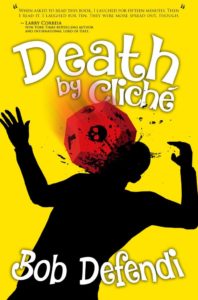 As a game developer, it seems that every other week you hear about a new game coming out that sounds exactly like the one you are making. In the 90s, this would strike us with fear, because inevitably the other guys would be beating us to market with something that sounded exactly like our game only tons better.
As a game developer, it seems that every other week you hear about a new game coming out that sounds exactly like the one you are making. In the 90s, this would strike us with fear, because inevitably the other guys would be beating us to market with something that sounded exactly like our game only tons better.
Inevitably, even if there were similarities, the end result was completely different from what we were making. Our fears were largely unjustified. Years later, I discovered how common that was across the board. Game developers, authors… you can practically give them explicit instructions on what to create, and they will still produce completely different takes on things.
So… a few weeks ago, I ended up chatting online with Bob Defendi about our respective projects. He’s another role-playing game designer, but more from the dice-and-paper side of things, having worked on Exalted, Spycraft, Shadowforce Archer, Stargate SG1, and Spacemaster. His novel, Death By Cliché, was being published by Curiosity Quills and due for release (at the time) in just a couple of weeks. He’s been busy working on two sequels (He’s writing #3 and editing #2).
I’d read his blog, so I had a vague idea about the book. But as we got chatting and he told me more about it, and I told him about Frayed Knights, we came to the realization that we were drawing our humor from the same well. Granted, it’s also the same territory as covered by The Gamers films, Knights of the Dinner Table, Order of the Stick, Dork Tower, and elsewhere, so it’s not exactly virgin territory. Still, near the end of the conversation, Bob said, “I’m glad I didn’t see yours before I wrote mine, and that we’re past the point where this could get weird.”
Fast forward… the book is out. I’ve read it. I enjoyed it. It’s a fun fantasy story full of in-jokes about role-playing games. If you are a Frayed Knights fan, I think you’ll probably enjoy it, too. Though they both poke fun at RPG tropes, however, their styles are pretty different.
In Death by Cliché, game designer Bob Damico is on his way to rescue an RPG demo at a game store run by a really, really bad game master. Unfortunately for Bob, said terrible game master comes from the Annie Wilkes school of fandom, who murders Bob. And then Bob, either dead or dying, finds himself in what is effectively game designer’s version of Hell… stuck in the fantasy RPG world of a very bad game master. Not just any bad game master, but the very one who murdered him. It’s full of all the old D&D-style clichés, ridiculously unrealistic events governed by game design tropes and random dice rolls, and cardboard-thin non-player characters.
If you know nothing of role-playing games or common fantasy tropes, never seen the Princess Bride or read / seen Lord of the Rings, then many of the jokes will go over your head. I doubt this describes many people who read this blog, however, so if you are reading this, you’re probably part of that niche audience who will get most of the references.
The jokes come fast. The fourth wall is constantly getting pulverized, then papered over just enough to get smashed through again. Instead of Narnia or Wonderland or The Territories, poor Bob Damico gets stuck in the most stupid of all fantasy worlds… the game-world dreamed up by his killer. As a free-willed non-player-character (NPC), his only contact with the “real world” is in-character conversation with the Player Characters, who believe that he’s just a surprisingly interesting character played by their game-master.
However, Bob’s very presence is having an impact on the game world. It’s changing because of his very presence. Becoming more real. And that may be killing him. Er, again. More. Something like that. But in spite of the cost, in spite of it being originally created by the creepy murderer with no imagination, once it starts getting a life of its own, is it now worth saving, in spite of the cost?
For me, sometimes the world-building got a little confusing, because there’s a very real connection between stuff happening in the real-world and what’s happening in the fantasy world, and vice-versa… but we as the audience don’t get to see that connection except through Bob’s eyes and comments from the Player Characters. As a reader, I wasn’t really sure of how those interactions worked, and that got a little confusing. Sometimes they are explained, and other times I’m left wondering. But maybe that’s just me. It would have been a lot of fun to get some flashes back to the “real world” to see the other side of some of those events.
Defendi is clearly emulating the style of greats like Terry Pratchett and Douglas Adams here, and it mostly works. But there are times when the narrator voice starts to overpower the rest of the story, especially in the first half of the book. But as the story itself gains traction and a life of its own beyond the joke (paralleling the game-world coming to life?), this becomes less of a thing and less necessary of a thing.
Problems aside, as a gamer, game designer, and fantasy fan in general, the story was a hilarious send-up of what these fantasy gaming worlds and player-character behavior would look like from the perspective of a character living there. It’s over-the-top and very funny. I ended the book wanting more, and I can’t wait to read the sequels.
Filed Under: Books, Impressions - Comments: Read the First Comment
Frayed Knights 2: Lovingly Hand-Crafted Pits of Despair!
Posted by Rampant Coyote on June 16, 2016
Nick Lives has been working on content for Frayed Knights 2 (even livestreaming his work, if you want to watch his work in progress). I gotta admit, this is motivational even to me when I see the results. I want to play this game! Which of course means I’ve gotta finish it.
This project has altered substantially since I first started. I’ve learned a lot more about Unity since I started… which means it’s a challenge not to rip out old code and replace it on a constant basis. There’s so much that could be done better… but it would be better still to get this thing done!
The design has also changed a great deal since the first game, and since my original efforts. I was working so hard on tools at the very beginning to make content development go more quickly, which would have ended up with somewhat more generic environments. The focus changed some time ago. With the proliferation of Roguelikes and the flat-level first-person RPGs (which I’m personally thrilled about), having much more custom-designed, detail-packed dungeons seems like the way to go and provide something different.
With the number of dungeon levels in this game (WHY do I do this to myself?), it was crazy trying to rack my brain for ideas on how to make each level stand out and be unique. I try to do that from the get-go, so that even the white-boxed blank levels have a different feel to them. Gameplay – each has a somewhat different focus and flavor. Then Nick comes in and makes sure that every level stands out visually as well, room-by-room and hall-by-hall. It’s fantastic, and a huge motivation boost for me to see things come alive like that.
Of course, we’re using tools to speed our efforts, but there’s a LOT of dungeon-crawling goodness to hand-build. I hope that the emphasis on custom, detailed, hand-crafted dungeons is appreciated and has an audience out there. As much as I like well-made procedural content, to me it still pales to a well-designed human-built level when it comes to dungeon crawling. Hopefully people will agree that this describes the dungeons of Frayed Knights 2: The Khan of Wrath.
Filed Under: Frayed Knights - Comments: Comments are off for this article
Movie Impressions: X-Men Apocalypse
Posted by Rampant Coyote on June 15, 2016
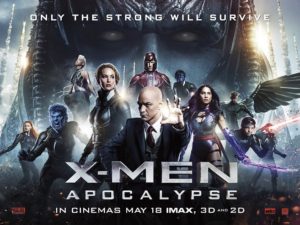 When I really started getting into comics – as in actively following titles monthly – it was the 1980s. Two of my favorites, The Uncanny X-Men and The New Mutants, were written by comics legend Chris Claremont. At the time I got into the X-Men, they primarily consisted of Cyclops (Scott Summers), Colossus (Peter Rasputin), Rogue, Nightcrawler (Kurt Wagner), Storm (Ororo Munroe), Wolverine (Logan), and Sprite (Kitty Pryde). Jean Grey’s recent death cast a long shadow over them all. And then there were some X-Men Alumni making periodic temporary reappearances – Angel, Iceman, and Beast.
When I really started getting into comics – as in actively following titles monthly – it was the 1980s. Two of my favorites, The Uncanny X-Men and The New Mutants, were written by comics legend Chris Claremont. At the time I got into the X-Men, they primarily consisted of Cyclops (Scott Summers), Colossus (Peter Rasputin), Rogue, Nightcrawler (Kurt Wagner), Storm (Ororo Munroe), Wolverine (Logan), and Sprite (Kitty Pryde). Jean Grey’s recent death cast a long shadow over them all. And then there were some X-Men Alumni making periodic temporary reappearances – Angel, Iceman, and Beast.
Claremont was one of the writers who added a great deal of maturity to the stories during his tenure. While the stories were still largely dominated by overpowered men, monsters, and others causing great damage to the scenery and each other through wild, brightly-drawn powers, Claremont made the stories ultimately about people. Stuff the audience cared about in their own lives: relationships, self-doubt, fitting in, dealing with loss, ethical quandaries, and so forth.
While X-Men Apocalypse didn’t quite capture the the X-Men character and feel exactly as the Claremont-era comics, it did seem to at least be taking Claremont’s lead. Almost (in my mind) to a fault: The main bad guy was really more of a force of nature with very little personality, and felt more like a catalyst for everyone else to pick a side, based on their own personalities and desires. Like Captain America: Civil War, it pits former and future allies against each other in a super-powered Battle Royale.
Compared to Civil War, it pales. But then, Civil War is one of the best superhero films ever (but one that depends on many previous films to have such a rewarding payoff), so that’s not a very damning comment. I think X-Men Apocalypse suffers a bit from having too many characters, as happens way too often in superhero movies. X-Men starts out by being an ensemble story, but by the time we’re done we’re dealing with something like a dozen significant characters. As much as I would have liked to see all of my 1980s era X-Men introduced, there was no room. So, no Colossus, no Kitty Pryde, no Rogue. But that was okay. There wasn’t enough screen time for most of the characters as it was, but for the most part, the film focuses on Magneto (Erik Lensher), Charles Xavier, Mystique (Raven Darkholme), and Cyclops (Scott Summers). And the bad guy, Apocalypse, but again, he’s kind of an event as much as a character.
In my mind, the real villain – and focus – in this film is Erik Lensher… Magneto. Without giving away any details, the audience can understand exactly why Xavier’s principles ring pretty hollow in Magneto’s ears. It’s also fun seeing Mystique thrust into the role of a heroine, and even a leader. Unfortunately, Jean Grey comes off as mostly an angsty, troubled brat with a lot of emoting, and her critical role in the climax felt a bit forced. There just wasn’t enough camera time for her to enjoy a believable character arc, or to see what she was really fighting against.
So while that’s more than mere nitpicking, we still came out of the film really impressed. It’s only because of the quality of the comic-adapted movies lately where this one comes out as a middle-of-the-road offering. IMO, it stands pretty even with X-Men: First Class, but isn’t quite of the caliber of X-Men: Days of Future Past. For superhero fans, it’s definitely worth watching.
Filed Under: Impressions, Movies - Comments: Comments are off for this article

